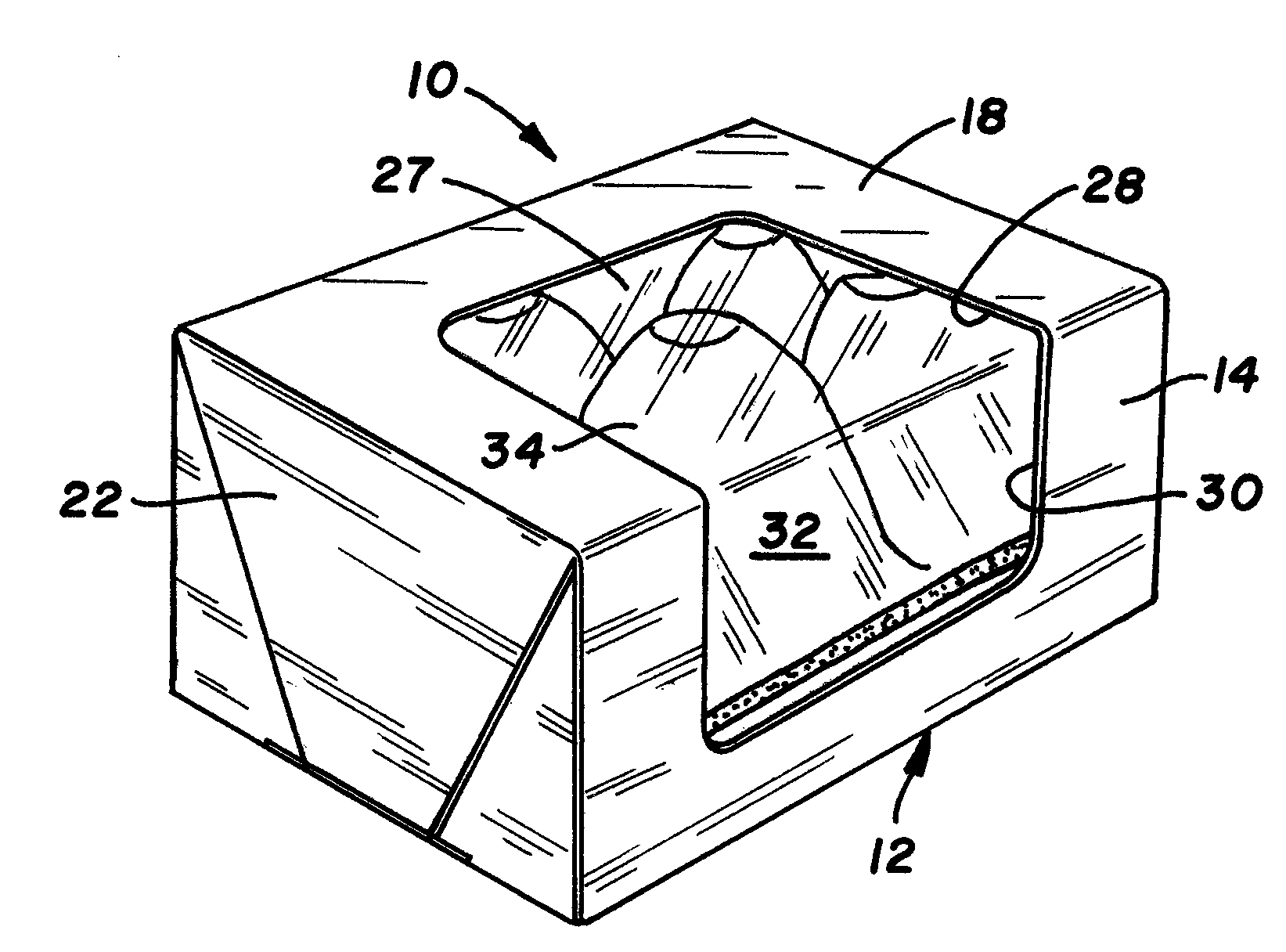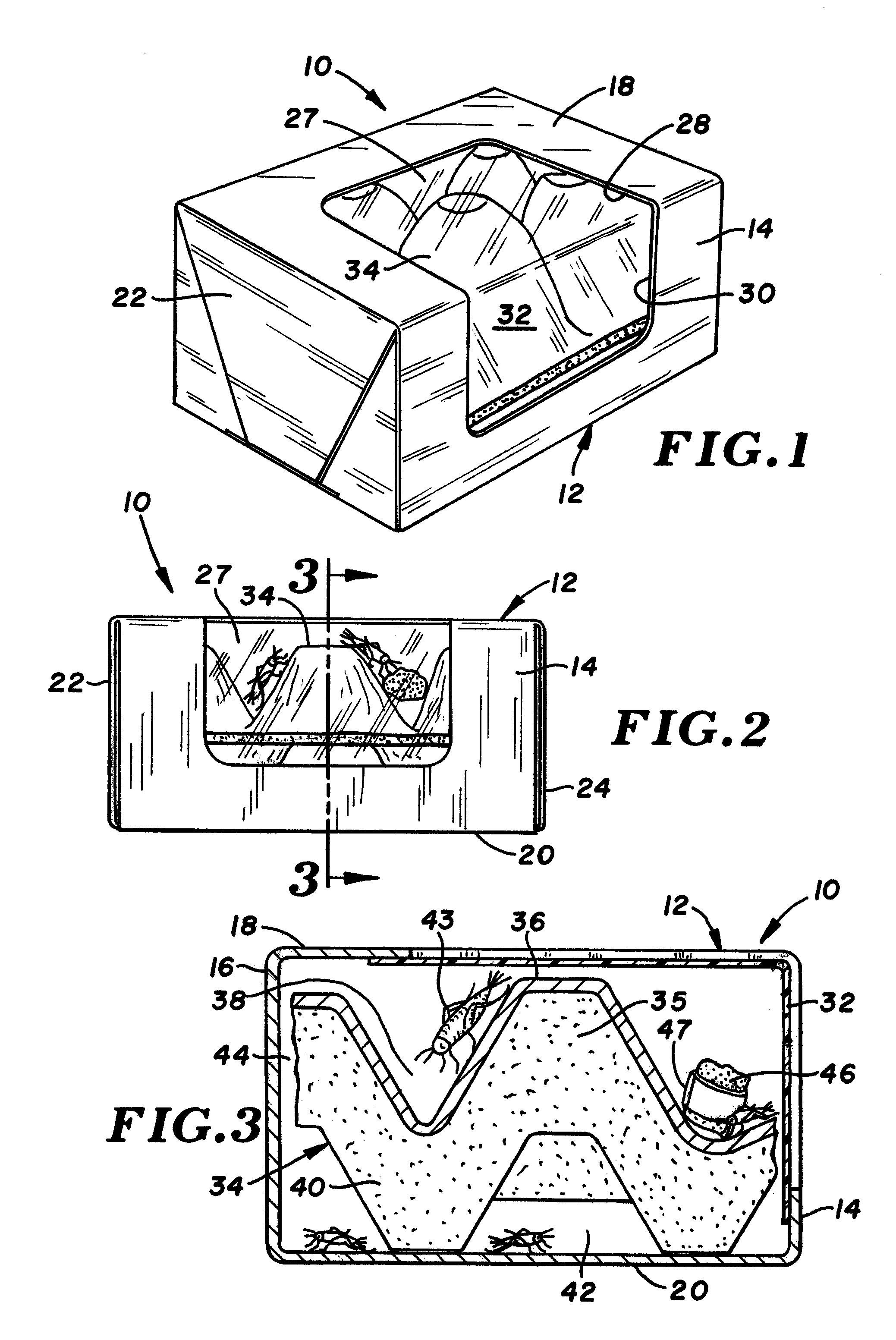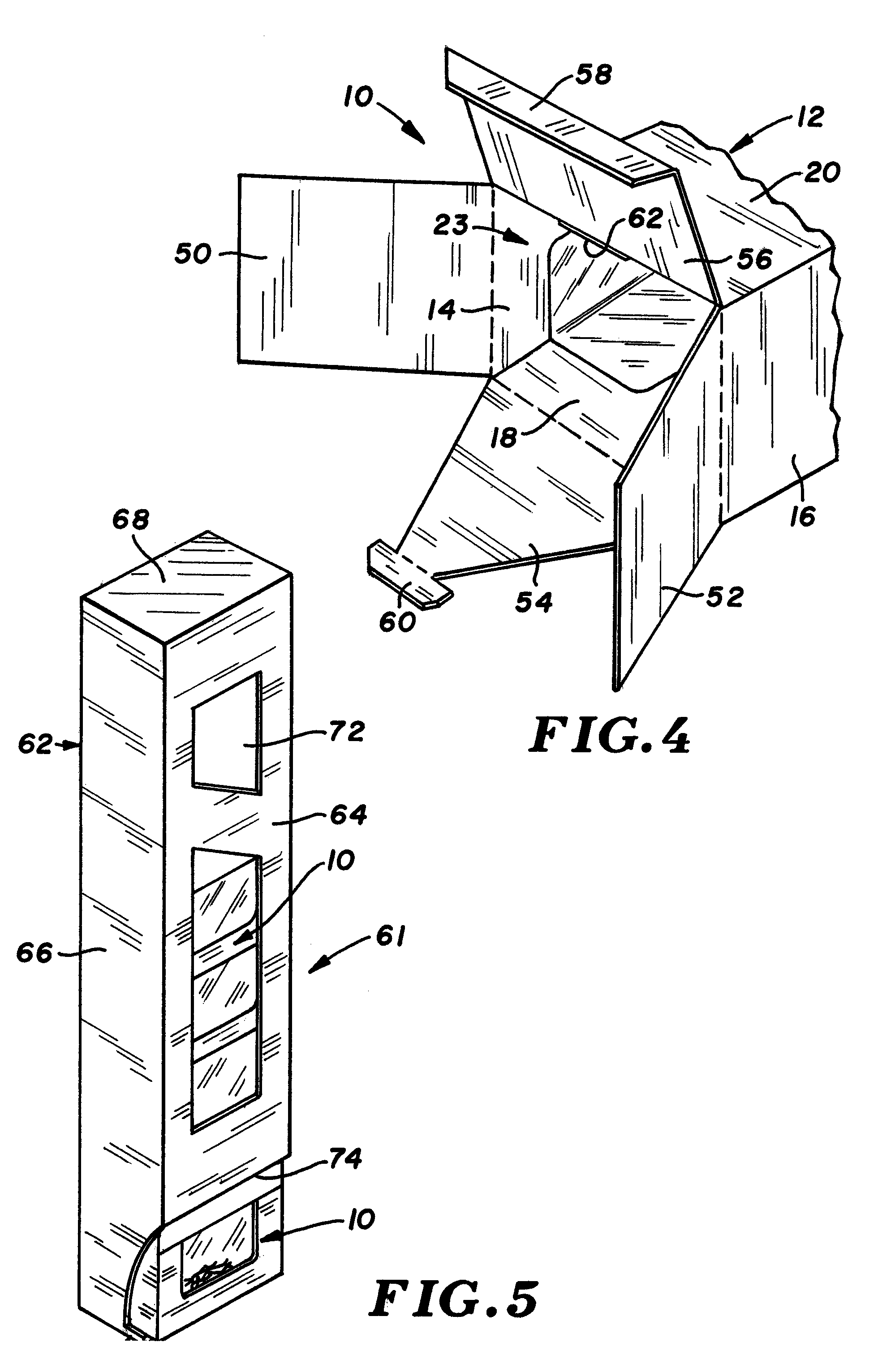Cricket habitat and retail receptacle
a retail receptacle and habitat technology, applied in pisciculture, aquaria, other apparatus, etc., can solve the problems of rotation of stock, impracticality of similar bulky display, etc., and achieve the effect of effectively managing the dispersion of pet food into the pet environment and prolonging shelf li
- Summary
- Abstract
- Description
- Claims
- Application Information
AI Technical Summary
Benefits of technology
Problems solved by technology
Method used
Image
Examples
Embodiment Construction
[0027]Referring to FIGS. 1 through 4, there is shown an insect habitat and retail package indicated generally at 10. As described herein habitat 10 houses crickets although habitat 10 could house other species of insect as well. Habitat 10 includes a housing 12. Housing 12 can be formed of a moisture absorbent material such as a paperboard material. The term paperboard is used comprehensively to include, without limitation, cardboard, fiberboard, and similar products made from cellulose fiber and having a thickness greater than normal paper. Housing 12 can be fabricated of other material fabricated to permit the escape of moisture from the interior of the housing. This could include, for example, a perforated plastic. Housing 12 has an interior space or room for habitation by crickets. Housing 12 has a front wall 14, a back wall 16, a top wall 18 and a bottom wall 20 which define the interior habitat space for insects. The various walls are opaque. Housing 12 has end openings closed...
PUM
 Login to View More
Login to View More Abstract
Description
Claims
Application Information
 Login to View More
Login to View More - R&D
- Intellectual Property
- Life Sciences
- Materials
- Tech Scout
- Unparalleled Data Quality
- Higher Quality Content
- 60% Fewer Hallucinations
Browse by: Latest US Patents, China's latest patents, Technical Efficacy Thesaurus, Application Domain, Technology Topic, Popular Technical Reports.
© 2025 PatSnap. All rights reserved.Legal|Privacy policy|Modern Slavery Act Transparency Statement|Sitemap|About US| Contact US: help@patsnap.com



